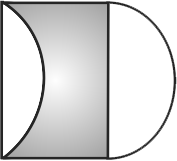364760 Two identical glass \(\left( {{\mu _g} = \frac{3}{2}} \right)\) equiconvex lenses of focal length f each are kept in contact. The space between the two lenses is filled with water \(\left( {{\mu _w} = \frac{4}{3}} \right)\).The focal length of the combination is
364760 Two identical glass \(\left( {{\mu _g} = \frac{3}{2}} \right)\) equiconvex lenses of focal length f each are kept in contact. The space between the two lenses is filled with water \(\left( {{\mu _w} = \frac{4}{3}} \right)\).The focal length of the combination is
364760 Two identical glass \(\left( {{\mu _g} = \frac{3}{2}} \right)\) equiconvex lenses of focal length f each are kept in contact. The space between the two lenses is filled with water \(\left( {{\mu _w} = \frac{4}{3}} \right)\).The focal length of the combination is
364760 Two identical glass \(\left( {{\mu _g} = \frac{3}{2}} \right)\) equiconvex lenses of focal length f each are kept in contact. The space between the two lenses is filled with water \(\left( {{\mu _w} = \frac{4}{3}} \right)\).The focal length of the combination is
364760 Two identical glass \(\left( {{\mu _g} = \frac{3}{2}} \right)\) equiconvex lenses of focal length f each are kept in contact. The space between the two lenses is filled with water \(\left( {{\mu _w} = \frac{4}{3}} \right)\).The focal length of the combination is

